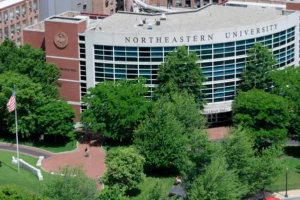The Beethoven House in Bonn, Germany, serves as an architectural and cultural homage to one of the most revered figures in Western classical music: Ludwig van Beethoven. As a site that extends beyond mere historical preservation, the Beethoven House functions as a multifaceted institution, encompassing a museum, research center, performance venue, and repository of Beethoven’s most significant manuscripts and relics. Founded in 1889 by the Beethoven-Haus Association, it stands as both a testament to Beethoven’s enduring influence on music and a symbol of the city’s commitment to preserving its artistic heritage. This article reviews into the unique significance of the Beethoven House, analyzing its role in shaping our understanding of Beethoven’s life, the narratives it constructs around his work, and the ways it negotiates the tensions between historic reverence and contemporary relevance.
The House as a Site of Memory
The Beethoven House is more than a physical structure—it is a curated space of memory, a locus where personal and public histories intersect. Situated at Bonngasse 20, the house where Beethoven was born provides visitors with an intimate glimpse into the early life of the composer. The building itself has undergone numerous renovations to preserve its original form, evoking a sense of authenticity that connects visitors to the late 18th century, when Beethoven’s genius began to unfold. Walking through its corridors and examining the artifacts, one cannot help but feel the palpable presence of a man whose music transcends centuries.
The historical architecture of the Beethoven House plays a significant role in how the narrative of Beethoven’s life is constructed and communicated to the public. Each room within the house is meticulously curated to reflect a specific aspect of Beethoven’s upbringing and creative journey. The Birth Room, for instance, showcases period-specific furniture and objects that hint at the social and familial conditions that shaped Beethoven’s early years. Yet, beyond the materiality of these objects, the room offers an affective experience—a spatial encounter that invites reflection on the emotional and intellectual worlds Beethoven inhabited.
Curatorial Narratives
While the Beethoven House serves as a celebration of the composer’s genius, its curatorial strategies raise pertinent questions about the nature of historical representation. Which aspects of Beethoven’s life and personality are accentuated, and which are left in the periphery? The museum’s focus tends to glorify Beethoven’s musical accomplishments while marginalizing other facets of his identity, such as his tumultuous personal relationships, struggles with deafness, and political ambivalences. Such choices can skew public perceptions, leading to an idealized, almost mythic, representation of Beethoven as the solitary genius overcoming adversity.
The Beethoven House’s collection includes manuscripts, letters, and personal items, providing a tactile connection to Beethoven’s creative process. The manuscripts are particularly significant, as they offer a window into the composer’s mind at work, with cross-outs, annotations, and revisions revealing his obsessive drive for perfection. However, these documents also bring to the fore the complex relationship between creator and creation. They underscore the laborious, often painstaking, nature of artistic production, challenging the Romantic notion of spontaneous genius that often surrounds Beethoven’s legacy.
Moreover, the exhibition’s emphasis on Beethoven’s deafness—a defining yet tragic element of his biography—serves both as an inspirational narrative and a poignant reminder of human fragility. The inclusion of his ear trumpets, conversation books, and medical reports attests to his resilience in the face of adversity, but it also risks reducing his life story to a narrative of triumph over disability. Such a portrayal can inadvertently overshadow other dimensions of his artistic and personal identity, simplifying a complex human being into a symbol of perseverance.
Bridging the Past and Present
Beyond its function as a museum, the Beethoven House is also a vital research institution, playing a crucial role in the ongoing scholarship surrounding Beethoven’s oeuvre. The Beethoven Archive, established in 1927, houses one of the world’s most comprehensive collections of Beethoven’s manuscripts, letters, and first editions. Scholars from around the globe access this archive to study the intricate details of Beethoven’s compositional process, his engagement with contemporary intellectual currents, and the reception of his works.
This scholarly dimension of the Beethoven House is significant, as it positions the institution not merely as a repository of the past but as an active participant in the production of knowledge about Beethoven. Through publications, academic conferences, and research fellowships, the Beethoven House fosters new interpretations and perspectives on the composer’s life and work. This dynamic interplay between conservation and innovation allows the Beethoven House to remain relevant within both academic and public spheres.
One of the most compelling projects spearheaded by the Beethoven House is the digitization of its collection. By making its holdings accessible to a global audience, the institution democratizes access to Beethoven’s legacy, inviting new forms of engagement and interpretation. The digitization initiative also reflects the Beethoven House’s awareness of its role in a rapidly changing cultural landscape, where digital media and technology shape how we interact with history and heritage.
The Beethoven House’s role as a performance venue further complicates its identity as a static memorial site. The adjacent chamber music hall, inaugurated in 1989 to celebrate the centenary of the Beethoven-Haus Association, hosts a series of concerts that breathe new life into Beethoven’s music. These performances are not mere reenactments of historical compositions but are occasions for reinterpretation and reinvention. Musicians bring their unique sensibilities to the works, creating a dialogue between Beethoven’s original intentions and contemporary musical practice.
The presence of live music within the museum space challenges the traditional boundaries between exhibition and performance. It disrupts the temporal distance that typically characterizes museum experiences, allowing visitors to engage with Beethoven’s music as a living, evolving entity rather than as an artifact of the past. This blurring of boundaries is emblematic of the Beethoven House’s broader mission: to bridge the gap between reverence for historical authenticity and the necessity of keeping Beethoven’s legacy alive in the present.
Impression
The Beethoven House, while rooted in the local history of Bonn, operates within a global context. It attracts visitors from around the world, serving as a pilgrimage site for music lovers, scholars, and tourists alike. In this sense, the Beethoven House functions as a microcosm of the broader cultural economy surrounding Beethoven, where his image and music are commodified and circulated across diverse cultural and geographical boundaries.
This global reach, however, comes with its own set of challenges. The narratives constructed within the museum must balance local and international expectations, ensuring that Beethoven’s story resonates with a diverse audience while maintaining historical fidelity. The Beethoven House’s programming—ranging from exhibitions on Beethoven’s influence in different cultural contexts to collaborations with international institutions—reflects its awareness of these complexities. By situating Beethoven within a global framework, the museum acknowledges the universality of his music while also recognizing the specificities of its historical origins.
The Beethoven House is more than a museum dedicated to the life and work of Ludwig van Beethoven; it is a living institution that negotiates the tensions between past and present, local and global, historical authenticity and contemporary relevance. Through its multifaceted programming, curatorial strategies, and scholarly initiatives, the Beethoven House offers a nuanced and layered understanding of Beethoven’s legacy. It invites visitors to engage with the composer not only as a historical figure but as an enduring source of inspiration and inquiry. In doing so, the Beethoven House ensures that Beethoven’s music continues to resonate with audiences across generations and cultural contexts, reaffirming his place within the pantheon of Western art and culture.
No comments yet.







